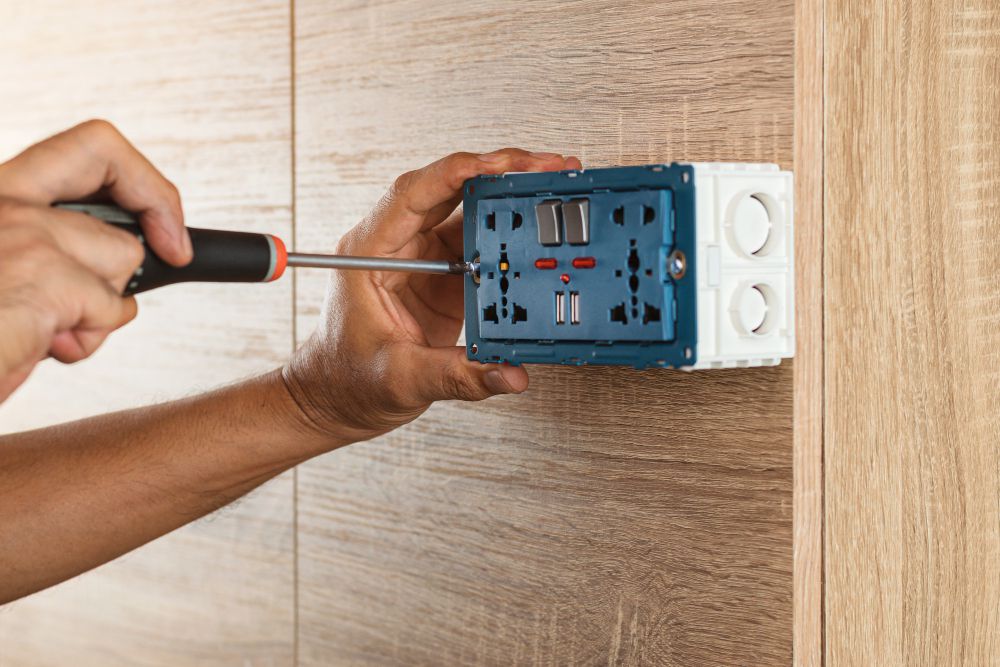Installing GFCI Outlet
GFCI outlets, also known as ground fault circuit interrupters, are special kind of receptacles which detect any leakage of electricity in the wiring system and trips automatically if it exceeds a certain amount. This important feature is necessary when electrical outlets are positioned near water, as they can reduce the risk of fatal shock. The GFCI outlet is capable of detecting extremely small levels of voltage, making it one of the most important safety devices for any home or business. For instance, in kitchens and bathrooms they are essential especially when counters, sinks or baths are fitted around the wall outlet.
GFCI outlets should not be confused with fuses as they do not provide protection from short circuits and overloading. Instead, their purpose is strictly limited to cutting power when ground faults are detected, thus reducing the risk of serious injury or property damage. If you plan to install any kind of electrical device in your home, then you definitely want a GFCI outlet for added safety. Every house should have at least one GFCI-protected outlet installed close to major water sources like sinks or showers. Also make sure that all outdoor outlets use this safety device, so you’re protected while using electrical tools and appliances outdoors.

Protecting people
The addition of GFCI outlets in the home is a great way to protect both people and appliances from electric shock, surges and fire. They are designed to protect against sudden spikes in electricity that can cause a circuit breaker overload situation. They do this by sensing any leakage of current and immediately shutting off power before it can cause permanent harm to anyone or anything.
GFCI outlets are not surge protectors. They are not designed to trip in the event of a surge of electricity. That is a surge protector or AFCI outlet. GFCI’s monitor current so if the current flowing out of the circuit changes by just a small amount from the current coming back into the GFCI it can shut the flow off immediately to prevent you from getting a lethal shock.
So what does this actually mean? Let’s say that you have a very old toaster and a wire inside the toaster breaks so that a bare wire is now touching the metal wall of the toaster. The toaster is plugged in so now the outside of the toaster is electrified. If you brush against the toaster while you are in bare feet or socks you can potentially receive a lethal shock. The GFCI outlet can tell if that is about to happen and trip before you get shocked.
Why use an electrician?
Electrical repairs can be costly and complex, so it is always a good idea to hire a licensed electrician for the job. An experienced electrician will be able to identify any potential underlying issues with the home’s wiring that could dramatically increase the cost of the upgrade from standard outlets to GFCI outlets. Particularly if it is an older home, there may be existing wiring issues that will require upgrading the wiring to GFCI outlet wiring before adding the GFCI outlets.
For this reason, it is important that homeowners seeking an electrical upgrade consult a professional before beginning any work. A professional electrician will be able to determine what steps will be necessary in order to safely complete the job without running into unexpected costs due to complications associated with faulty wiring. Juniper Mountain Electric will provide an estimate and detailed breakdown of potential charges before we proceed with any work so that you are aware of all costs up front. Having a clear understanding of what needs to be done and the cost associated with it will help ensure a safe and successful electrical upgrade. Depending on the local building codes, a permit may or may not be required. Having an electrician like Juniper Mountain Electric assess your wiring and electrical panel before upgrading the outlets is always a good idea. This will help prevent any costly surprises.
Where should GFCI outlets be placed?
Proper installation of a GFCI outlet requires careful adherence to the guidelines set forth by the National Electric Code (NEC). The NEC mandates the installation of GFCI outlets in new construction projects where electrical outlets are located close to water, as well as in exterior outlets and bathroom outlets. Furthermore, it is necessary to install GFCIs when outlets provide power to kitchen counters.
Older homes that mostly have regular outlets might not require GFCI outlets unless you update the wiring but, having them installed is often recommended. When deciding which area or room to install the GFCI outlet, consider locations that pose an increased risk for water contact such as outdoor outlets and bathrooms or any other high-moisture areas like kitchens or laundry rooms. It’s also a good idea to replace any outdated electrical wiring with newer ones that include ground fault circuit interrupter features for added safety. With careful consideration of your home’s layout and adherence to all safety protocols, you can ensure that your home is properly protected from dangerous shocks when working with electricity.
It’s prudent for everyone to install these additional outlets wherever necessary, regardless of whether it’s required by law or not. It will help safeguard you and your family against potential shocks and unpleasant accidents since poor quality wiring can lead to electric shock if left unchecked!
Adding a new GFCI outlet vs. replacing an old outlet with GFCI
The installation of a GFCI outlet in the home can require different levels of effort depending on whether an existing regular outlet is present or not. When there is already an outlet in place, switching from a grounded standard to a GFCI can be fairly straightforward and typically requires less labor costs due to not needing to run wires and make cuts in the wall. This makes it a much more convenient option for customers when they are looking to upgrade their outlets.
However, if there is not an existing normal outlet present, an electrician will need to put in additional time and effort including potentially cutting drywall, running new wires and then wiring the new outlet. This can take significantly more time than simply upgrading an existing one, which means that customers may have to pay more for the extra time and work when making the switch. As such, getting an estimate from Juniper Mountain Electric to determine whether the job is straightforward or more complicated is helpful in assessing potential difficulty levels and estimating costs.


